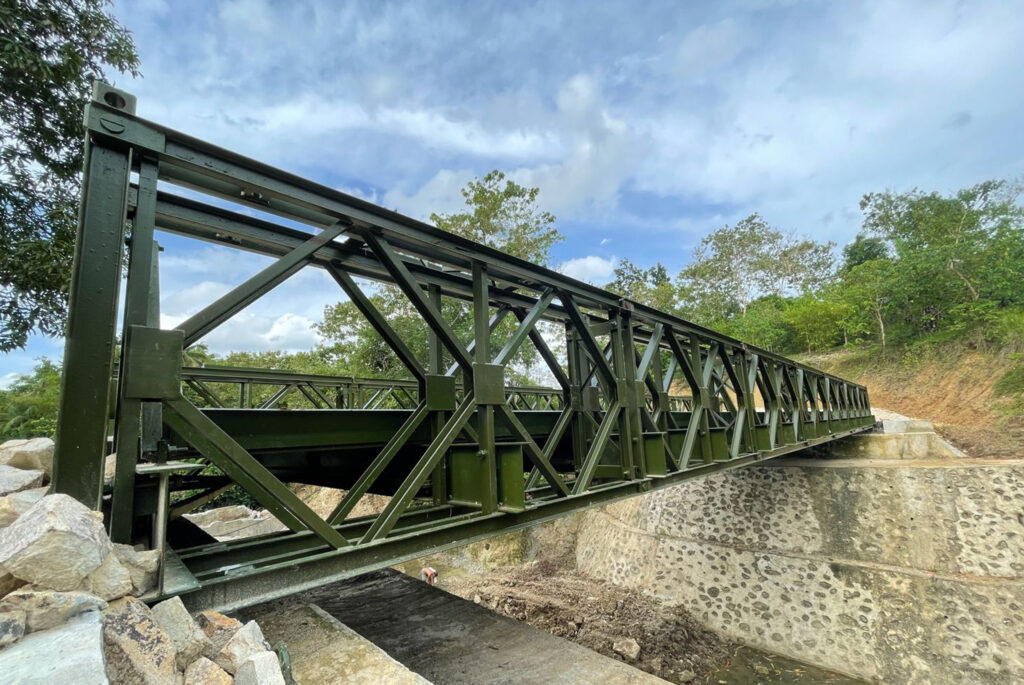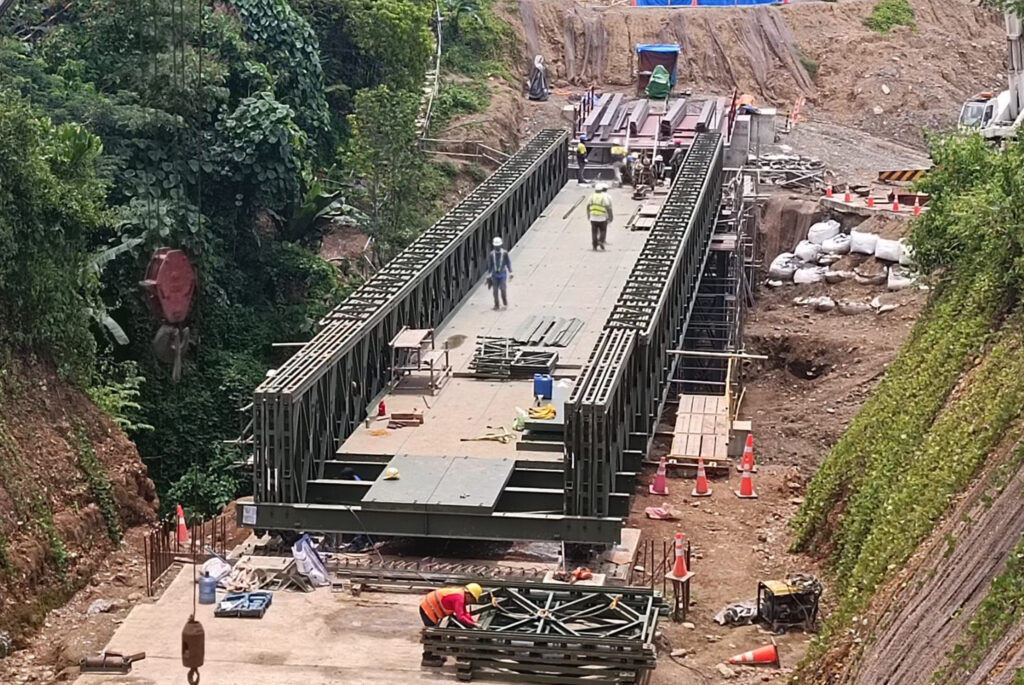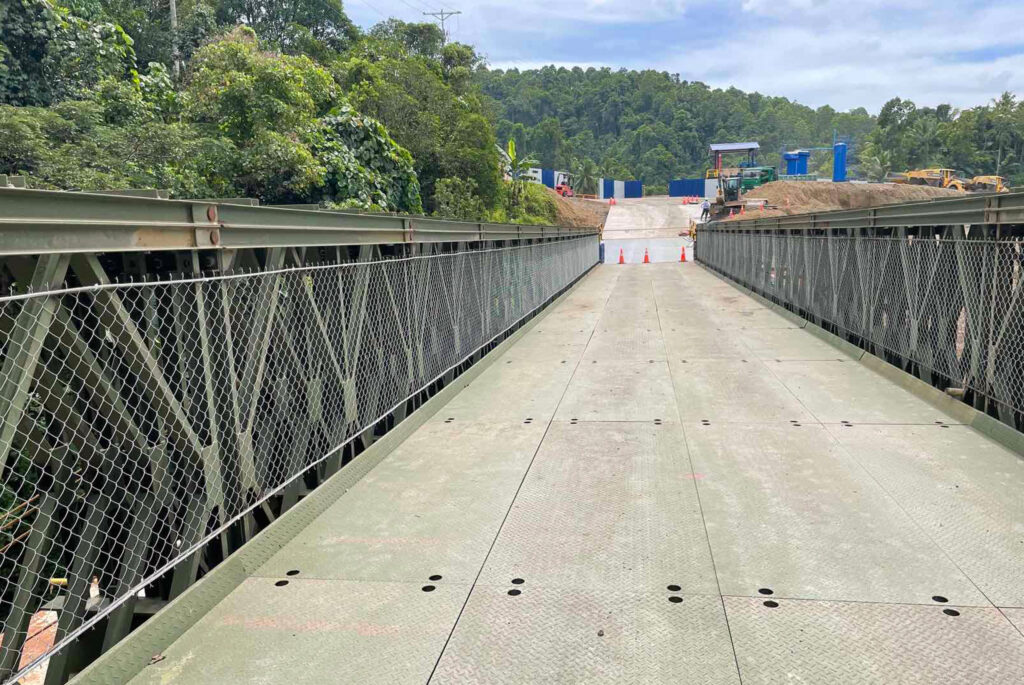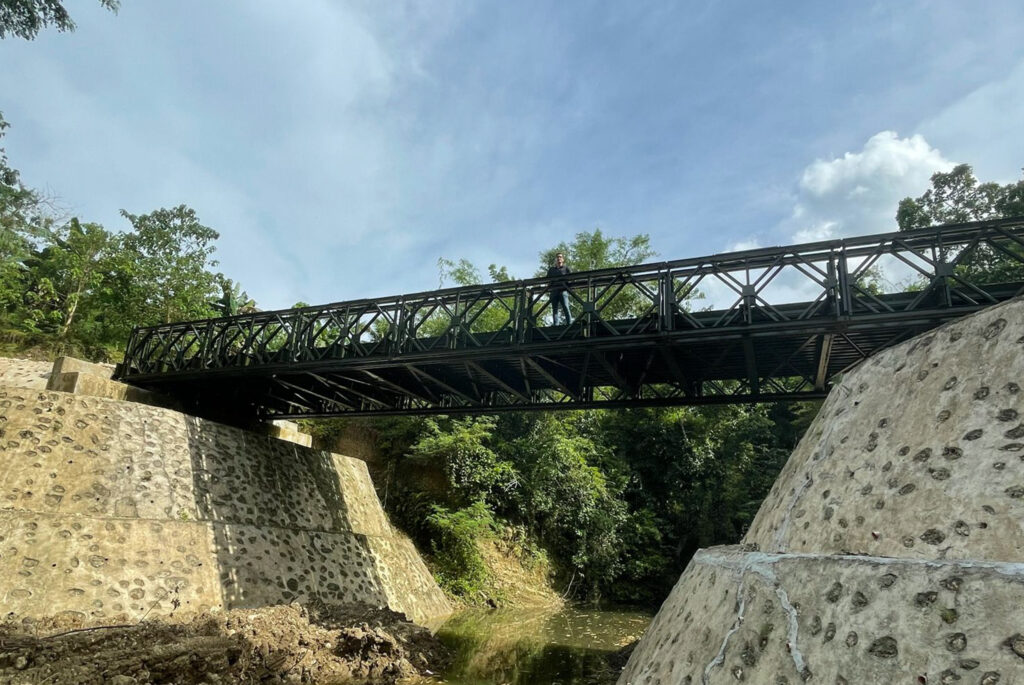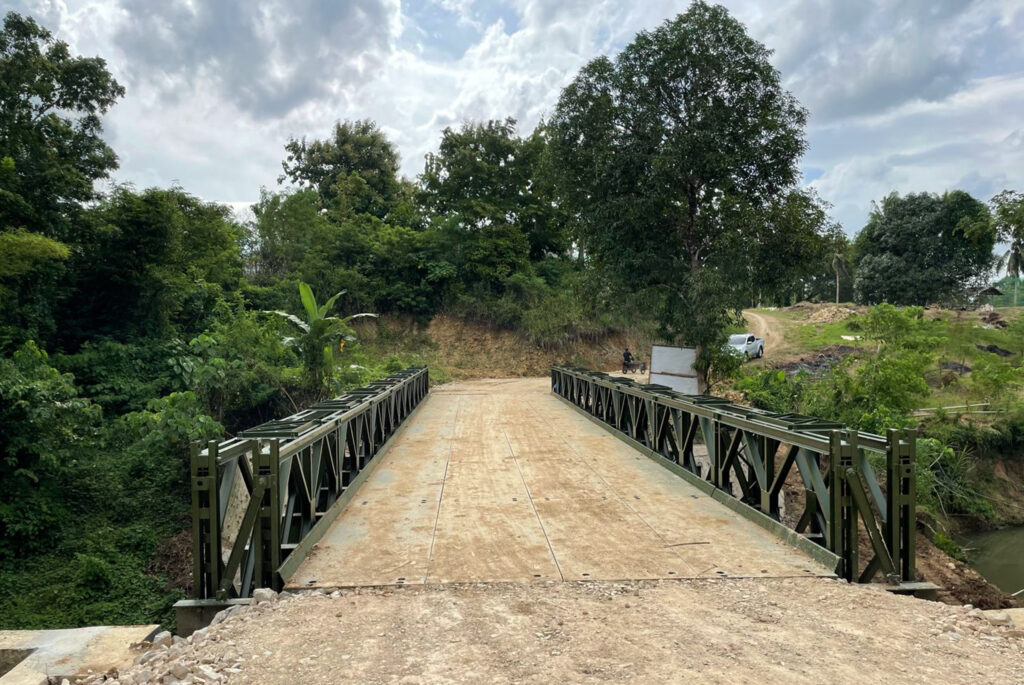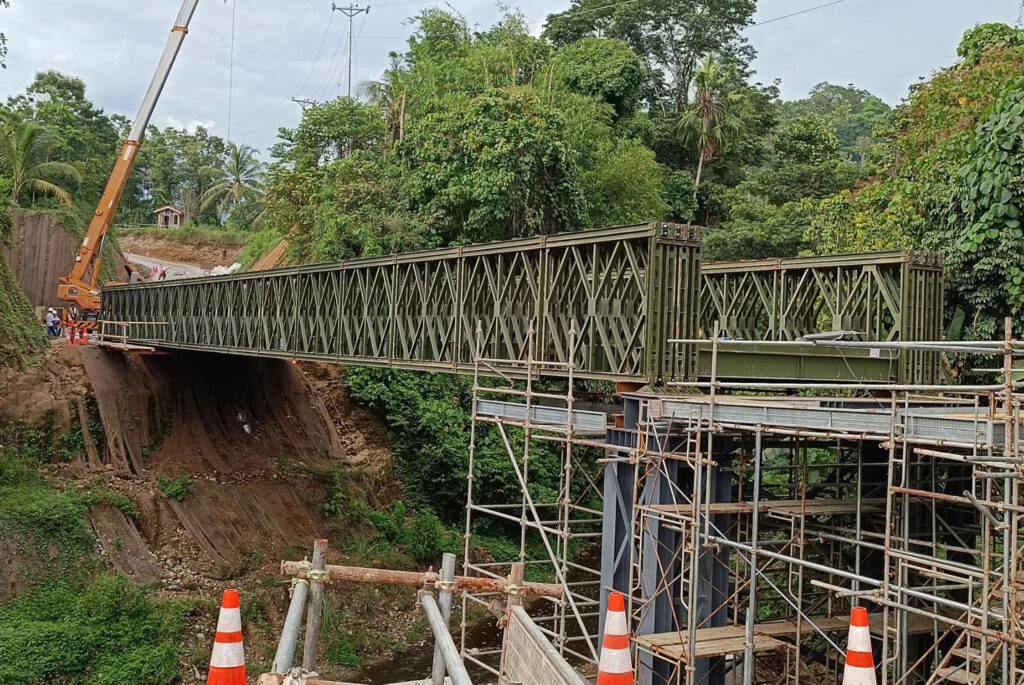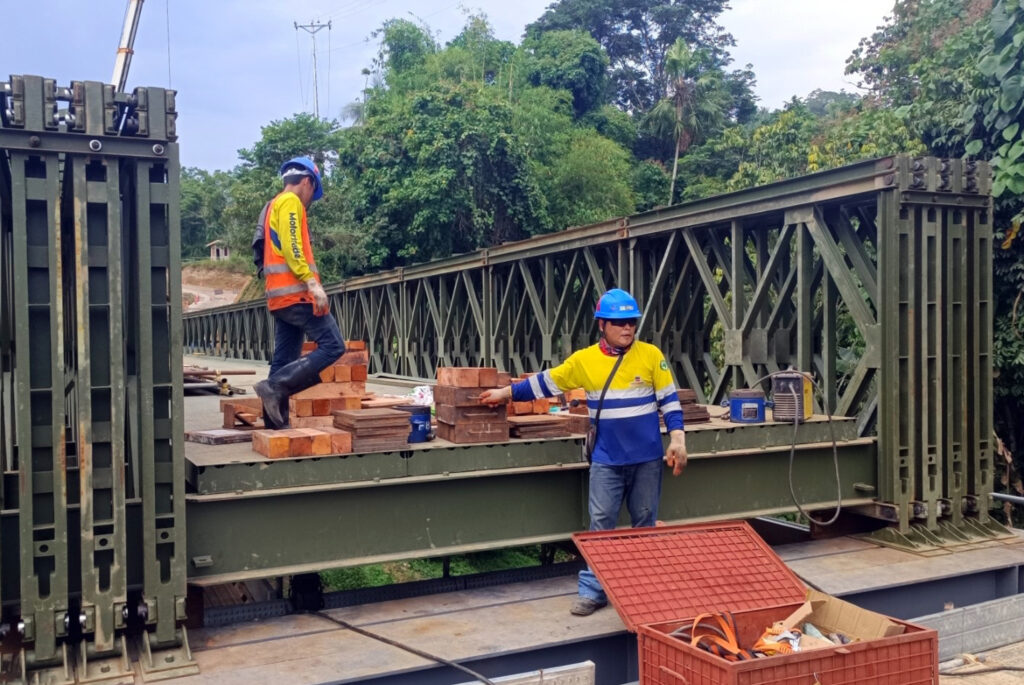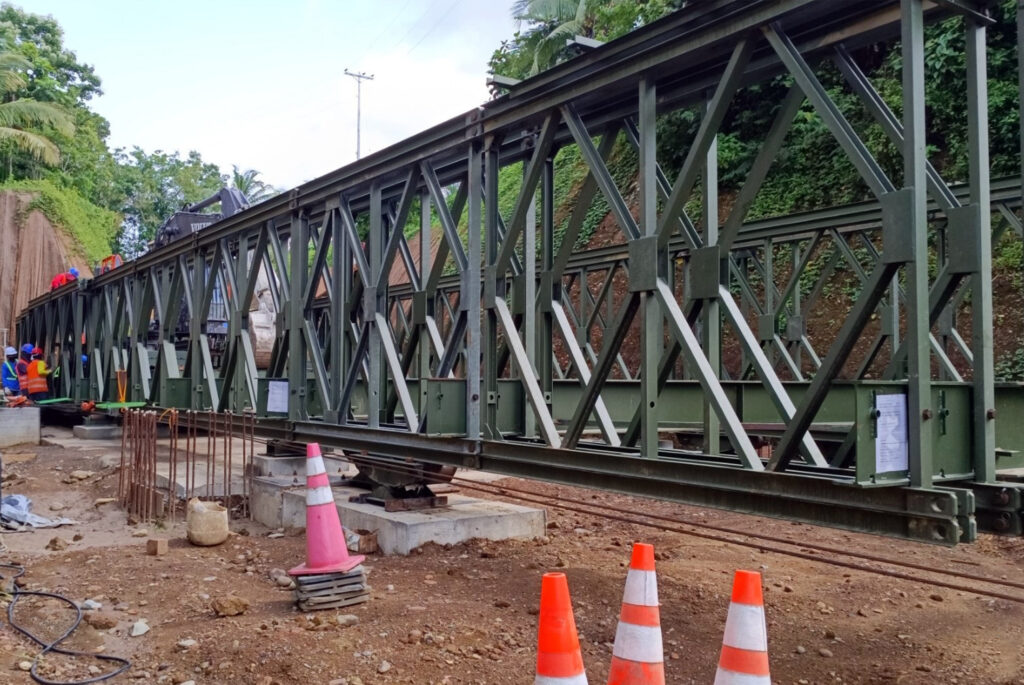ESC Modular Steel Bridge - Panel Type (Bailey) System
Modular, portable, or prefabricated steel bridges are a critical engineering solution in modern bridge construction, known for their versatility, tailored design in hours, quick manufacturing and delivery in weeks, ease of access to site and installation, long durability and simple maintenance. Among these, the Bailey Bridge stands out as a historical and most widely used example.
ESC modular steel bridges are prefabricated structures composed of steel truss panels, transom beams, reinforcing chords, bracings, decking boxes and connection components that can be rapidly assembled on-site. These bridges are designed to be portable, reusable, and adaptable to various sizes and load requirements. The panel-type design involves standardized units that can be combined in different configurations, making them suitable for both temporary and permanent applications
Modular Steel Bridge Characteristics & Features
Prefabricated
The components are manufactured in a factory setting, ensuring high precision and quality control.
Portable
These bridges can be easily transported to the construction site, often using standard shipping containers or flatbed trucks. Components can be handled and transported manually in remote areas.
Standardized Components
The bridge components are standardized, facilitating mass production and ease of assembly.
Lightweight Construction
Despite its strength, the Bailey bridge is relatively lightweight, which simplifies transportation and handling.
Rapid Assembly
Due to their modular nature, these bridges can be erected quickly, minimizing disruption and construction time. Assembly can be done manually or with the aid of basic equipment.
Versatility
Modular steel bridges can be configured for various lengths, widths, and load capacities, making them suitable for different environments and uses.
Simplicity
The design allows for quick and straightforward assembly by relatively unskilled labor, often within hours.
Scalability
Modular steel bridges can be extended or reinforced by adding additional panels and supports, accommodating various spans and load requirements.
Durability
Made from high-strength steel, these bridges offer excellent longevity and resistance to environmental factors.
Development and Design
The Bailey bridge was designed to meet the need for a portable, strong, and easy-to-assemble bridge that could support heavy loads. Its modular components include prefabricated steel trusses, panels, and decking units that are connected using bolts and pins. This design allows for rapid construction without the need for specialized tools or heavy equipment.
No questions asked, the ESC Modular Steel Bridge (Bailey) is indeed an engineering marvel. The first versions were light, and soldiers could assemble it within 24-hours. The bridge could support even the heaviest tanks for over a 60-meter span. Popular descendants of the bridge that are commonly used today include the many forms of Truss bridge, the Crane Mat bridge, and the Pedestrian bridge.

Construction Process
The Bailey bridge was designed to meet the need for a portable, strong, and easy-to-assemble bridge that could support heavy loads. Its modular components include prefabricated steel trusses, panels, and decking units that are connected using bolts and pins. This design allows for rapid construction without the need for specialized tools or heavy equipment.
No questions asked, the ESC Modular Steel Bridge (Bailey) is indeed an engineering marvel. The first versions were light, and soldiers could assemble it within 24-hours. The bridge could support even the heaviest tanks for over a 60-meter span. Popular descendants of the bridge that are commonly used today include the many forms of Truss bridge, the Crane Mat bridge, and the Pedestrian bridge.



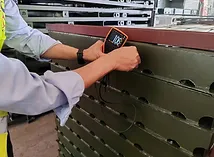
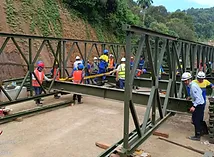
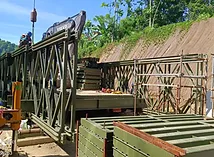
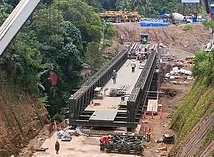

Planning and Design. The construction of a modular steel bridge begins with a detailed site survey and load analysis to determine the appropriate configuration and materials. The design phase involves creating detailed plans that specify the layout, assembly sequence, and required components.
Prefabrication. In the factory, components are fabricated according to the design and shop drawings. This includes cutting, drilling, fit-up, welding, machining, trial assembly, corrosion protective coating, and finishing steel panels, trusses, and decking. Quality control measures ensure that each component meets the required standards.
Transportation. The prefabricated components are transported to the construction site. Due to their modular nature, these components can be efficiently packed and shipped using standard transportation methods.
4. Installation. Typical remote site without heavy lifting crane or equipment usually use launching installation method which involves the following steps:
Foundation Preparation: The bridge supports or abutments are prepared, often using concrete or steel foundations.
Assembly: Launching nose panels and main trusses are connected using bolts and pins. Depending on the span and load requirements, multiple panels may be joined to form longer sections. Erect transom beams to form a stable inverted portal frame structure, reinforcing chords, bracings to be assembled following the installation guide and sequence.
Launching: Using basic equipment to push or pull the assembled structure from abutment A to abutment B.
Decking Installation: Once the main trusses are in place, decking units are installed to create the roadway surface. Decks can be wooden planks or steel sheets for light duty and thicker steel sheets or concrete for heavy duty use.
Accessories: Additional components, such as guardrails and surface treatments, are added to complete the bridge.
Inspection and Testing and Applications
Load testing is a popular method of verifying the loadbearing capacity of bridge structures. The main advantage of load testing is its non-destructive nature and the minimum impact on the structure itself. Generally, load testing subdivides into two categories – static and dynamic tests. In a static test, observation focuses on structural response to the ballast of known parameters. The dynamic trial relies on the usage of artificial excitation of structure vibrations; the goal is to assess the real dynamic properties of the bridge under study in its actual or operational conditions. It is also called simulation.
Following the process, the overall integrity of the bridge is ensured as well as the welfare and safety of the public before opening the bridge to the intended use.
Military Uses
Modular steel bridges, particularly Bailey bridges, have been extensively used in military operations. Their ability to be quickly deployed and assembled makes them ideal for establishing supply routes, crossing rivers, and replacing destroyed infrastructure in combat zones.
Disaster Response
In disaster-stricken areas, modular steel bridges provide a rapid solution for restoring connectivity. Their quick assembly helps in delivering aid and supplies, as well as enabling evacuation and rescue operations.
Temporary and Permanent Infrastructure
Modular steel bridges are also used in civil engineering projects for temporary detours during construction or for permanent installations in remote or challenging locations. Their adaptability makes them suitable for both urban and rural applications.
Industrial and Commercial Use
These bridges are often employed in industrial settings to create access over obstacles such as railways, waterways, and pipelines. They provide a cost-effective and durable solution for various commercial needs.
ESC modular steel bridges, with their innovative panel-type design, offer a versatile and efficient solution for a wide range of applications. The Bailey bridge exemplifies the benefits of this approach, combining strength, portability, and rapid assembly to meet diverse infrastructure needs. Whether for military, disaster response, or civil engineering, these bridges continue to play a crucial role in modern construction and logistics.

ESC-HD-100 MODULAR Bridge
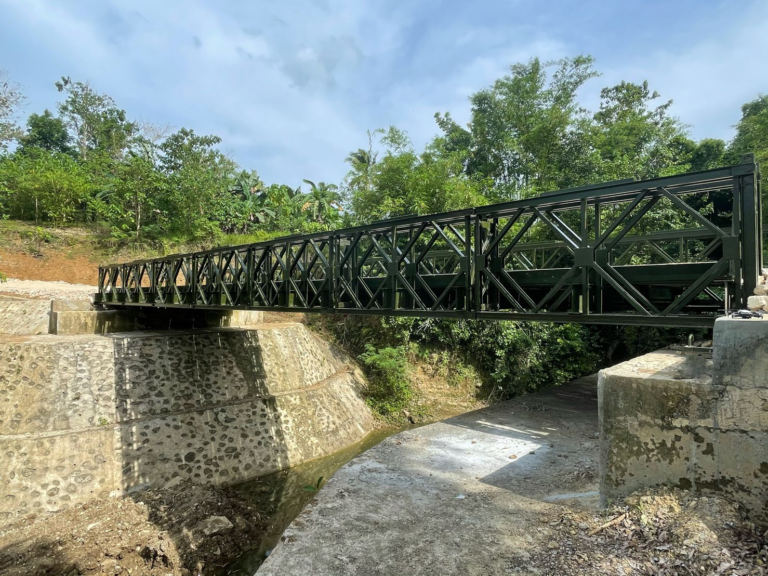
| Model Name | ESC-HD-100 Modular Bridge |
|---|---|
| Model Type | 100-Type |
| Model Derived | CB100, HD-100, British 321-Type |
| Bridge Deck net Width | 4.0m |
| Maximum Free Span Length | 51.0m |
| Panel Dimension | 300mm x 1400mm (holes center distance) |
Among the crafts of ESC in steel bridges is the ESC-HD-100 Modular Bridge, or the so-called 321-Panel Type Bridge. The bridge panels are composed of welded high-grade structural steel elements. The girders are lightweight composite panels connected by sturdy steel pins. Panels and components of the steel bridge are easy to handle and transport, can be interchanged, and are simple to erect and disassemble. They can also be assembled into different forms of panel bridges according to their span length and transportation requirement.
ESC-HD-100 Modular Bridge or 321-Panel Type Bridge is suitable for short to medium spans or light to moderate loads. It can stand to a maximum free span length of 51 meters (167.30 feet), with a deck net width of 4 meters (13.10 feet). Being lightweight, this bridge type is guaranteed for emergency and difficult situations. Different configurations and dimensions of bridge panels can also be custom-built.
ESC-HD-200 modular Bridge
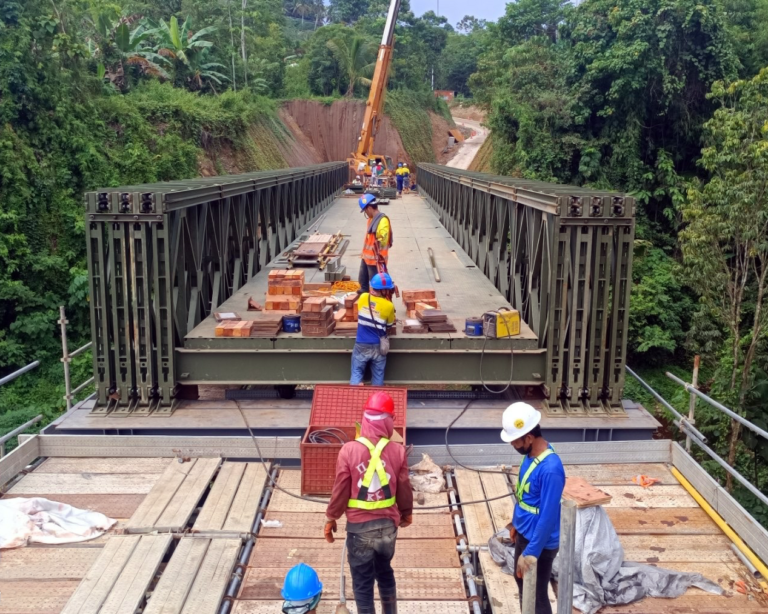
| Model Name | ESC-HD-200 Modular Bridge |
|---|---|
| Model Type | 200-Type; HD200, CB200, ZB200 |
| Single lane | Bridge deck net width: 3.15m |
| Max Free Span Length | 60.96m |
| Extra Width Single lane | Bridge deck net width: 4.2m |
| Max Free Span Length | 60.96m |
| Standard Double Lanes | Bridge deck net width: 7.35m |
| Max Free Span length | 45.72m |
| Panel Dimension | 3048mm x 2134mm (holes center distance) |
ESC-HD-200 model is an upgrade of the Modular bridge ESC-HD-100 in terms of load capacity and span length. With panel heights increased to 2.13 meters (7 feet), it can cover maximum free span of 60.96 meters (200 feet) for single lane width and 45.72 meters (150 feet) for double lane width.
In the assembly of ESC-HD-200, joints between panels are located alternately against the joints between reinforcement chords to reduce inelastic deformation due to oversized pinholes. Pre-arch or camber is employed to counter deflection of the bridge at the mid-span. All bolted connections are equipped with orienting sleeves to ensure that compression forces are absorbed by the sleeve and tensions by the bolts.This helps to increase the life span of the bolts and generally the safety of the panel bridge. Composite braces against wind loads are also provided and connected to the transoms or girders to enhance the overall stability of the bridge, especially against side bending.
The model is also suitable for load designs such as HS-15, HS-20, HS-25, HL-93, Pedrail-50, and more.
ESC Steel Structures’ commitment to structural steel fabrication and their extensive portfolio showcases their proficiency in delivering engineering marvels, ranging from Bailey bridges to colossal suspension bridges.
